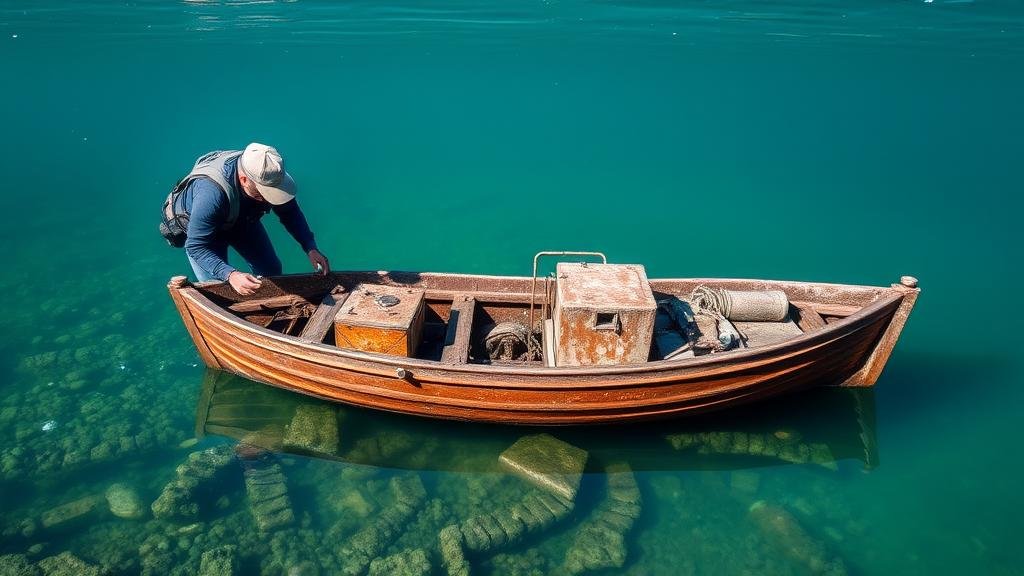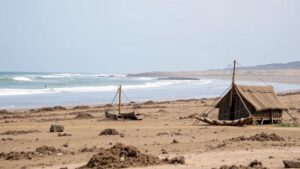Detecting in Freshwater Lakes for Sunken Boats and Artifacts
Detecting in Freshwater Lakes for Sunken Boats and Artifacts
The underwater world of freshwater lakes is a treasure trove of history, often hiding sunken boats, lost artifacts, and remnants of past civilizations. Detecting these submerged objects requires a combination of the right technology, advanced techniques, and a profound understanding of local geography. This article aims to explore the methodologies involved in detecting sunken boats and artifacts in freshwater lakes, emphasizing their importance and applications.
The Importance of Underwater Detection
Unearthing sunken boats and artifacts plays a significant role in preserving cultural heritage and promoting archaeological research. For example, the discovery of a sunken steamboat in the Mississippi River revealed valuable insights into 19th-century trade routes and transportation methods in the United States. Plus, underwater detection contributes to environmental conservation by locating and removing hazardous debris that poses threats to aquatic ecosystems.
Techniques and Technologies for Detection
Detecting submerged objects in freshwater lakes typically employs a variety of techniques and technologies:
- Sonar Technology: Sonar (Sound Navigation and Ranging) is a widely used method for underwater detection. Side-scan sonar systems produce detailed images of the lakebed, allowing researchers to identify anomalies that may indicate sunken vessels or artifacts. For example, in 2018, a team utilized side-scan sonar in Lake Michigan to locate the wreckage of a historic ship, uncovering critical data on its construction and cargo.
- Magnetometry: This technique involves measuring magnetic fields to detect ferrous materials, such as iron and steel, often found in boats and artifacts. Magnetometers can identify shipwrecks, cannons, and even buried treasure. A notable case occurred in Lake Ontario, where magnetometry helped locate the remnants of a naval vessel lost during the War of 1812.
- Remote Operated Vehicles (ROVs): Equipped with cameras and other sensors, ROVs allow researchers to visually inspect and document submerged sites. ROVs used during the investigation of the wreck of the USS Conestoga in the San Francisco Bay provided invaluable footage and data about the conditions surrounding submerged maritime artifacts.
Planning the Detection Process
Successful underwater detection starts with thorough planning. Researchers must conduct a preliminary survey of the lake, gathering information on:
- Historical Records: Examining historical documents can provide clues about where boats sank or artifacts were lost. Maps, insurance reports, and ship manifestos reveal locations of interest.
- Bathymetric Surveys: Understanding the lakes topography is crucial for effective detection. Bathymetric surveys measure the depth and contours of the lakebed, providing critical information on potential wreck sites.
- Local Ecosystems: Awareness of local flora and fauna can influence detection strategies. For example, dense vegetation like submerged aquatic plants can complicate sonar readings.
Case Studies of Successful Discoveries
Several notable discoveries exemplify the efficacy of underwater detection methods:
- The Wreck of the SS Eastland: Located in the Chicago River, this passenger ship capsized in 1915. Using advanced sonar technology, teams successfully mapped the wreck site, leading to its preservation and further archaeological study.
- The Discovery of the USS Arizona: Underwater detection efforts at Pearl Harbor revealed the resting place of this sunken battleship. ROVs were instrumental in examining this significant historical site, providing insights into the attack on Pearl Harbor and the ships history.
Challenges in Underwater Detection
While underwater detection has advanced significantly over the years, it is not without challenges. These include:
- Environmental Conditions: Factors such as turbidity, temperature, and seasonal changes can affect visibility and the performance of detection technologies.
- Regulatory Issues: Legal restrictions may complicate detection efforts, particularly in protected areas or sites of historical significance. Navigating these regulations is crucial for successful expeditions.
- Funding and Resources: Underwater surveys often require substantial financial investment and expertise. Securing funding and support from academic institutions or governmental organizations can be a hurdle.
Conclusion and Future Directions
The field of underwater detection in freshwater lakes is both fascinating and challenging. As technology continues to advance, methods for locating sunken boats and artifacts will become even more refined. Researchers must also prioritize the integration of ecological and historical data into detection processes to enhance critical understanding and preservation of submerged cultural heritage.
For those interested in venturing into underwater detection, it is essential to stay informed about emerging technologies, collaborate with experts, and engage with local communities to maximize the potential for discovering and preserving these underwater treasures.
In summary, the journey to uncover submerged artifacts is rich with opportunities to learn about our past while contributing to environmental stewardship and cultural preservation.


